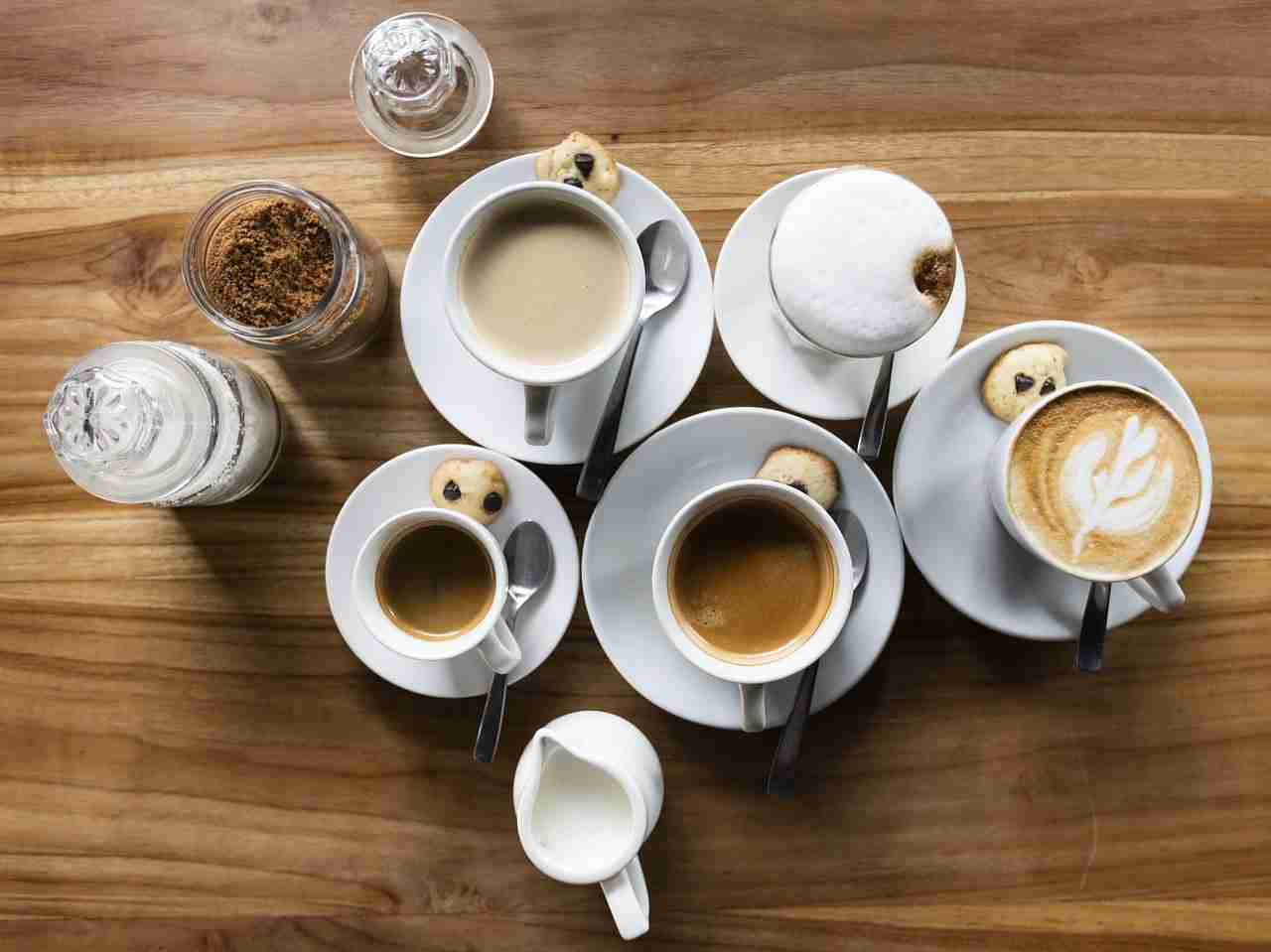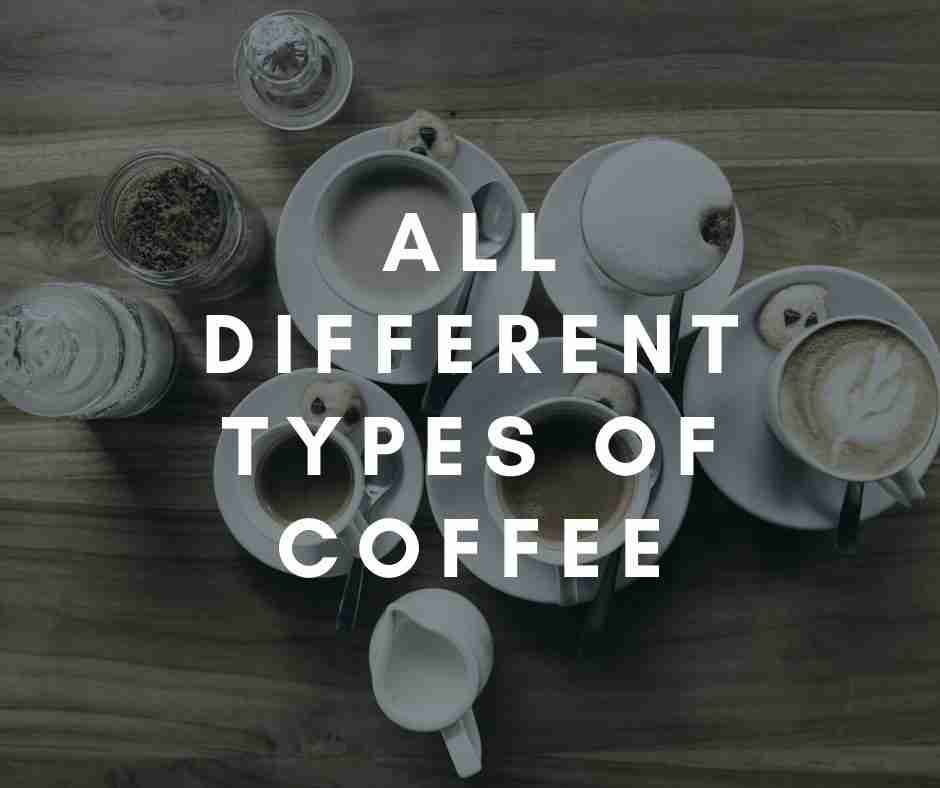
All of us encounter this overwhelming situation at least once in our life when we find a restaurant’s menu full of items we’ve never ever heard of. Well, a cafe might put you into one, and through this article, we’ll try to prepare you for that.
Did you know, there are hundreds of different types of coffee?
Of course, no one would know all of them unless you’re a beverage guide or professional but if you’re a coffee lover then I’m sure you would love to try and explore as many types as you can.
In this article, we’ll talk about all the different types of coffees available in the market today, not just that, we’ll also look at the characteristics that distinguish them from others.
Coffee can be distinguished based on the type of beans used, whether it’s hot or cold, brewing method, milk or water, or the number of calories per drink. I’m sure by reading this article you’ll get to know a lot of new things or facts about coffee, so without wasting any time let’s jump right in.
Types of Coffee Beans
There are four main types of coffee beans and we’ll be discussing them here:
- Arabica
- Robusta
- Liberica
- Excelsa
Let’s discover what makes them different from each other.
Arabica
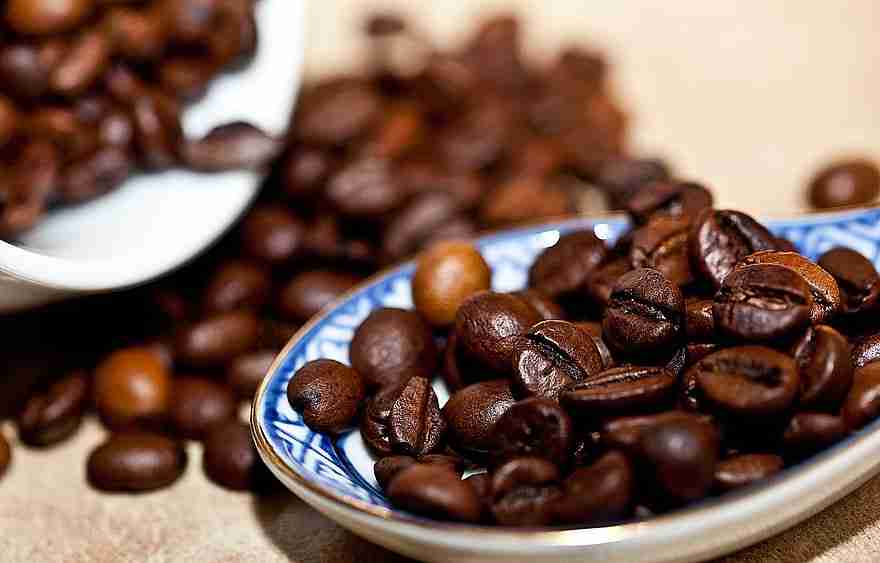
Arabica is one of the most common and certainly the most popular types of coffee all around the world, this coffee is made from the beans of the Coffea arabica plant.
Arabica beans originated from the southwestern parts of Ethiopia and they’re responsible for making up to 60% of coffee production worldwide. Brazil is the world’s foremost exporter of Arabica beans.
High-quality arabica coffee has a slightly sweeter flavour, with a slight touch of chocolate, Carmel, and nuts. You may also notice hints of fruit and berries.
The environment and the soil composition where the beans are grown may also affect the balance of the flavours mentioned above.
It’s very important to store these coffee beans properly so they could stay fresh and not lose those rich flavours.
Most of the coffee beans you see at the grocery stores, coffee shops, and cafes are arabica coffee, some brands like “Espresso blends” might mix arabica and robusta coffee beans. But in the majority of cases, it’s arabica beans.
One point to note about the arabica beans is that their taste diminishes when it’s served cold or blended with milk or cream.
Some of the major countries producing high-quality arabica beans are:
- India
- Brazil (largest producer)
- Colombia
- Mexico
- Costa Rica
- Rwanda
Types of Arabica Coffee Beans
Arabica coffee beans have a lot of types, based on the region they are grown and other factors. Some of these types are distinctive of specific coffee growing regions while other types are grown in many areas worldwide.
Typica
Typica is considered one of the first coffee varieties, and many other varieties are grown from it. It’s popular for its clean and sweet cup. Some subtypes of Typica are
- Sumatra
- Bergendal
- Rume Sudan
- Amarello de Botancatú
- Blawan Paumah
- Java Mocha.
Bourbon
Bourbon is also considered one of the first coffee types, it’s name is pronounced as Bor-Bonn. These beans have a chocolaty and fruity overtone. Bourbon plant is used for crossbreeding and producing many other kinds of Arabica.
Some of the Sub-varieties of Bourbon are:
- French Mission
- N39, Mayaguez
- Arusha, Jackson
- Kenya Selected
- Semperlorens
- Caturra
Caturra
Caturra is a hybrid of the Bourbon strain that was first grown in Brazil during the early 1900s, but today it’s grown in the higher altitudes of Central America. Caturra has a light body and citric flavour.
Catimor
This variety is a crossbreed of Caturra and Timor, of which the latter is a hybrid of Arabica and Robusta beans. Catimor inherited the harsh flavours of the Robusta beans, but the cantimor produced in Nicaragua, and India has a more mellow flavour.
Catuai
Catuai is a hybrid of Caturra and Mundo Novo (a hybrid of Bourbon/Typica), it is widely grown in Brazil and produces a delicious coffee with piquant acidity and sweetness.
Gesha
This variety originated near the city of Gesha, Ethiopia, but imported to Panama, and now it’s grown in high altitude areas of Central America. It has a unique, delicate taste that brings to mind a tropical fruit, jasmine and honeysuckle.
It is one of the world’s most expensive types of coffee.
Jackson
This variety is produced in the countries of Burundi and Rwanda, the Jackson variety is famous for its delicate, acidic edge.
Jamaican Blue Mountain
The name of this variety is taken from the name of the mountainous region in Jamaica where it’s grown. It’s well-known for its light, creamy, smooth mouthfeel and mild flavour.
You don’t need to add extra sugar or cream to this drink because of the inbuilt sweet flavour of this variety.
Jember
This Typica strain of Arabica is widely cultivated throughout Indonesia and produces coffee known for a heavy body and rich, buttery feel and a sweetness akin to brown sugar and caramel.
Kent
Kent is also an Indonesian strain with a lighter and a delicate spicy flavour.
Kona
Kona is one of the world’s most expensive coffees, it is exclusively grown on the slopes of Mauna Loa and Hualalai volcanoes in the North and South Kona Districts of the Big Island.
It takes climate, altitude and rich lava soil for producing world-famous Kona. It has a light body and naturally sweet and fruity flavour that hints at spices and nuts.
Maragogype
It is also known as “Elephant bean coffee” because of its large bean size, This variety is grown in Brazil and offers a very heavy, buttery body with hints of citrus flavours.
Maracatu
Maracatu is a crossbreed of Maragogype and Caturra, it’s grown in the high altitude areas of Central America and has a ripe fruit flavour.
Mocca
It is a small bean which grows in Hawaii and Yemen and features a strong chocolate flavour.
Mundo Novo
Mundo Novo is a natural hybrid of Bourbon and Typica, these beans are often used as a base for other popular varieties, slightly bitter in taste with a hint of caramel sweetness.
Pacamara
The name itself suggests Pacamara is an offspring of the Pacas and Maragogype beans, it grows in Central America and features a balanced flavour with sweet acidity and floral flavours.
Villa Sarchi
Developed near the Costa Rican town of Sarchi, this natural Bourbon hybrid offers a medium body with refined acidity and pronounced fruit flavour.
Villalobos
Also grown in Costa Rica, Villalobos thrives in poor soil and yields a pleasing balance of lively acidity and sweetness that’s just enough that you don’t need to add any sugar or cream.
Robusta

When it comes to worldwide production, Robusta coffee beans are second most popular in Europe, the Middle East and Africa.
It is well-known for its strong and harsh flavour, Robusta coffee contains extremely high levels of caffeine, which makes the plant far more buoyant than the Arabica species.
Because of its burnt or rubbery taste, robusta coffee is not a popular coffee commodity as Arabica. However, because Robusta beans are so much easier to grow and harvest as compared to Arabica beans, many producers do tend to reap higher profits when they can sell Robusta.
Robusta may be used for discount lines like instant coffees, by using 4 parts Arabica beans to 1 part Robusta in a given collection, a roaster might save up to 20 to 30 per cent on the cost of raw beans. However, it looks like sacrificing product quality but you can’t do anything with that.
The high-quality Robusta coffee beans feature hints of chocolate and rum, but in reality, these are not always readily available.
But if your expectations from your cup of coffee are limited to getting a daily dose of caffeine, then you can go for a standard cup of Robusta and cut the hard flavour with cream and sugar.
Liberica
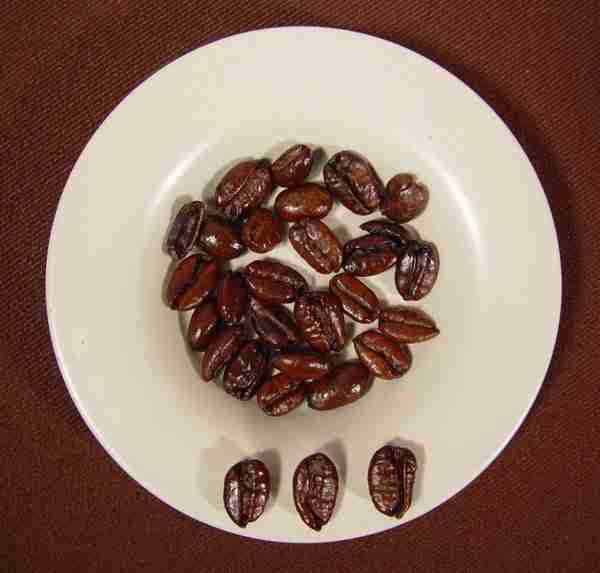
Liberica coffee beans are one of the rare coffee beans, they’re grown in some specific climatic conditions with production being not that high for farmers to scale their production and satisfy global markets.
Liberica is famous for the hints of fruit and flowers and somewhat “woody” taste.
There was a time when Liberica coffee was incredibly famous. A plant disease “coffee rust” developed near the end of the nineteenth century that eliminated almost all of the Arabica plants across the world.
Because coffee was in such a huge demand, even at that point, both the farmers and government officials were able to find suitable substitutes.
Excelsa
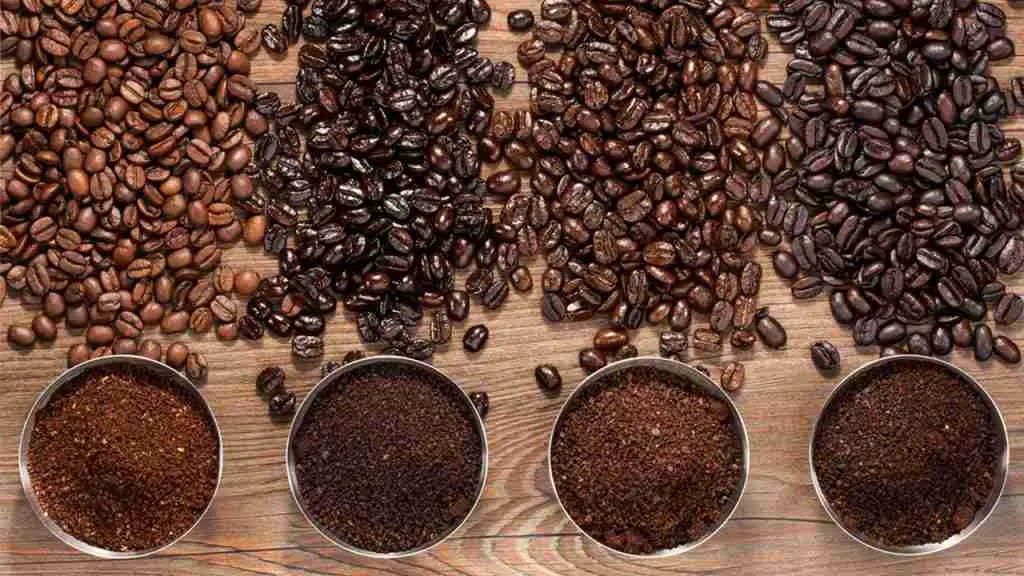
Excelsa is a member of the Liberica family, but this species is actually incredibly distinct. Like the Liberica coffee we discussed above, Excelsa coffee is grown primarily in Southeast Asia and represents a little fraction of the overall coffee production.
Excelsa features a tart, fruitier flavour and is well-liked for showing the attributes of both light and dark roast coffees.
Different Types of Coffee
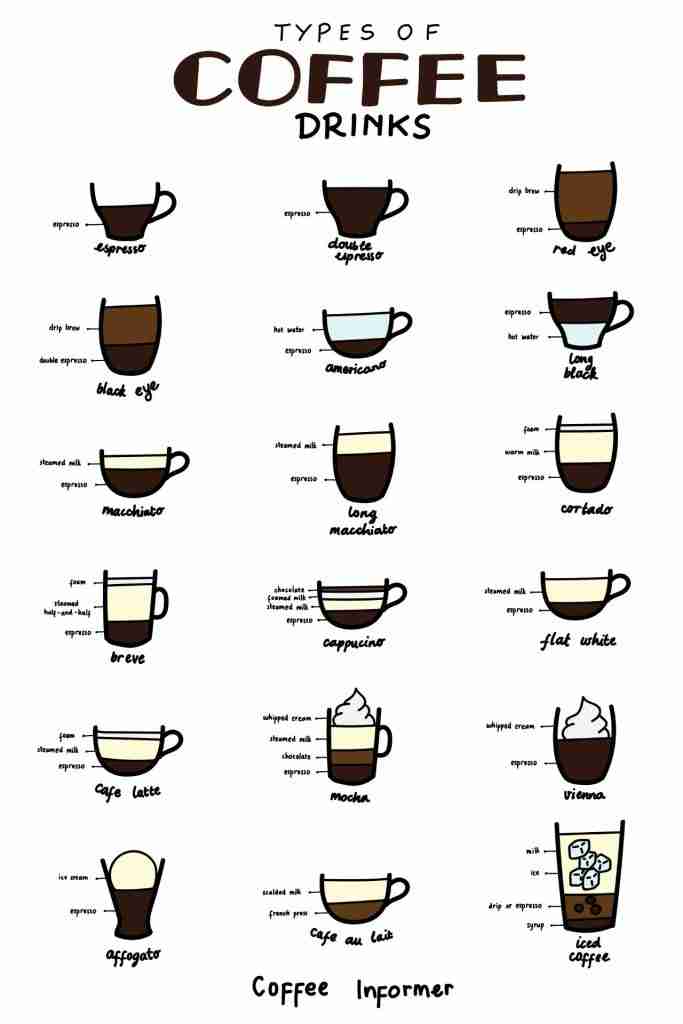
Now we’ll discuss different types of coffee drinks prepared by using different brewing techniques. You might have tried most of them but I’m sure you haven’t explored all of them yet.
Black Coffee
Black coffee is as simple as it gets with ground coffee beans steeped in hot water, served hot. It’s also known as “cafe noir”.
Black coffee is normally brewed without any added flavours, sugar, or cream. When you add cream, sugar or flavouring it often turns the coffee from a dark black colour to a lighter colour. Black denotes that it’s ultra-pure.
Latte

The name “Latte” is derived from the Italian words caffè latte, which means “milk coffee.”
As one of the most popular coffee drinks out there, the latte contains a shot of espresso and steamed milk with just a touch of foam. It can be prepared plain or with a flavour shot of anything from vanilla to pumpkin scoop.
A typical latte is made with 6 to 8 ounces of steamed milk and one shot of espresso.a
The beverage may also be served with foam for both flavor and presentation purposes. A latte is similar to a cappuccino, but it has more steamed milk.
The ingredients and the preparation process is what sets a latte apart from other coffee drinks. While all lattes are made with espresso and steamed milk, larger lattes are often made with a double shot of espresso.
A macchiato has no steamed milk but it does have the latte’s familiar espresso and foamed milk.
Then, of course, we have iced latte, which is just chilled milk and espresso served over ice. The ice can be blended for a more even consistent flavour, sugar is also added for flavour.
Lattes have enjoyed widespread popularity for almost two decades now, but the “latte art” phenomenon is still relatively new to the scene. We all have seen it, beautiful presentations of white milk along the top of a mug that’s arranged in the shape of a flower, a bird, or even a face, these awesome designs are made with steamed, frothing milk.
The espresso is added to the cup first, and then steamed milk is slowly poured in it. Within a few seconds, the milk rises to the top, and the remaining milk can be poured as a pattern or design.
Cappuccino

A cappuccino is an espresso drink based on coffee that’s originated in Italy and is prepared with steamed milk foam.
Cappuccino is a latte made with more foam than steamed milk, often with a sprinkle of cocoa powder or cinnamon on top. Sometimes you can find variations that use cream instead of milk or ones that throw in flavour shots, as well.
Other variations of the drink include the use of cream instead of milk, use of non-dairy milk, and flavouring it with cinnamon or chocolate powder. It is typically smaller in volume as compared to caffè latte, with a thicker layer of foam.
Its name comes from the Capuchin friars, referring to the colour of their habits, and in this context referring to the colour of the beverage when milk is added in small portions to dark brewed coffee.
The appearance of a modern cappuccino with espresso créma and steamed milk is a result of a long evolution of the drink.
The Italian cappuccino was not known outside Italy until the 1940s and seems to be born out of Viennese style cafes in Trieste and other cities in former Austria in the 20th century. Today this drink has spread worldwide and can be found at almost every coffee shop.
Americano
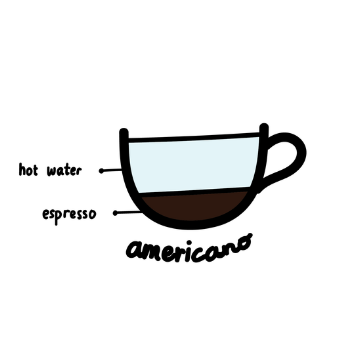
Simple in preparation, the Americano contains water and espresso. The ratio of these ingredients is generally either 1/2 and 1/2 or 1/3 espresso and 2/3 water.
The Americano tends to stand out amongst its other espresso cousins because it doesn’t have milk in it. However, some people do add milk, you will likely never receive an Americano with any form of dairy or dairy-alternative in it unless you specifically ask for it.
One more interesting thing is that an Americano can also be iced, the process is still the same, the main difference being that cold water is used instead of warm, and you can put a few ice cubes in it to cool it down further.
With a similar flavour to black coffee, the americano contains an espresso shot diluted in hot water., if you’re making your own, pour the espresso first, then add the hot water.
Espresso

Espresso is a coffee making method that originated in Italy, in which a small amount of nearly boiling water is forced under pressure through finely-ground coffee beans.
Espresso coffee can be made with a wide variety of coffee beans and roasting methods, it is typically thicker than coffee brewed by other methods. Espresso has a higher concentration of suspended and dissolved solids and has cream on top.
As a result of the pressurized brewing process, the flavours and chemicals in a typical cup of espresso are very well concentrated.
The three dispersed phases in espresso are what make this beverage unique, the first dispersed phase is an emulsion of oil droplets. The second phase is suspended solids, and the third phase is the layer of gas bubbles or foam.
The dispersion of very small oil droplets is perceived in the mouth as creamy, this characteristic of espresso contributes to the body of the beverage.
Espresso is also the base for various coffee drinks like:
- caffè latte
- cappuccino
- caffè macchiato
- caffè mocha
- flat white
- caffè Americano.
Espresso has more caffeine per unit volume than most coffee drinks, but because the standard serving size is much smaller, the total caffeine content is less than a mug of standard brewed coffee.
The real caffeine content of any coffee drink varies by size, bean origin, roast method and other factors, but a typical serving of espresso usually contains 125 to 180 mg of caffeine, whereas a typical serving of drip coffee usually contains 160 to 200 mg
Espresso is both a coffee beverage and a brewing method, it is not a specific bean, bean blend, or roast level. Any bean or roasting level can be used to produce a perfect espresso.
An espresso shot can be served solo or used as the foundation of most coffee drinks, like lattes and macchiatos.
Doppio
Doppio espresso is a double shot, extracted using a double coffee filter in the portafilter, this results in 60 millilitres of drink, double the amount of a single shot espresso.
A single shot of espresso, by contrast, is called a solo and developed because it is the maximum amount that could practically be extracted on lever espresso machines.
Today the Doppio is the standard shot, and because solos require a different filter basket, solo shots are often produced by making a doppio in a two-spout portafilter, but only catching one of the streams.
Cortado

A cortado is a beverage consisting of espresso mixed with a roughly equal amount of hot milk to reduce the acidity, the milk in a cortado is steamed, but not frothy and texturized as in many Italian coffee drinks.
A cortado is the perfect balance of espresso and warm steamed milk, the milk is used to cut back on the espresso’s acidity.
Red Eye
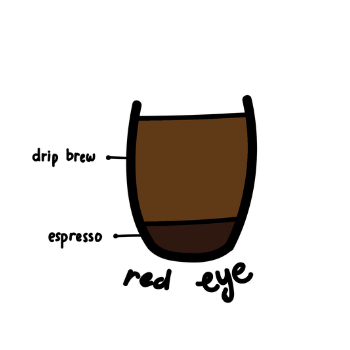
A Red Eye is a drink that consists of brewed coffee topped off with a shot of espresso before double shots became the standard espresso pull, a Red Eye usually contained one shot while a “Black Eye” had two shots.
Red-eye can cure any tiresome morning, a full cup of hot coffee with an espresso shot mixed in, this will definitely set your heart at a rapid pace.
Galão

Galão is a hot drink that originated from Portugal made of espresso and foamed milk. Similar to caffè latte and café au lait, it consists of about one-quarter coffee and three quarters foamed milk.
It is served in a tall glass, as opposed to the smaller garoto that is served in a demitasse. When the proportion of half milk is called meia de leite and it comes in a cup.
This hot coffee drink is closely related to the latte and cappuccino, the only difference is that it contains about twice as much foamed milk, making it a lighter drink compared to the other two.
Lungo
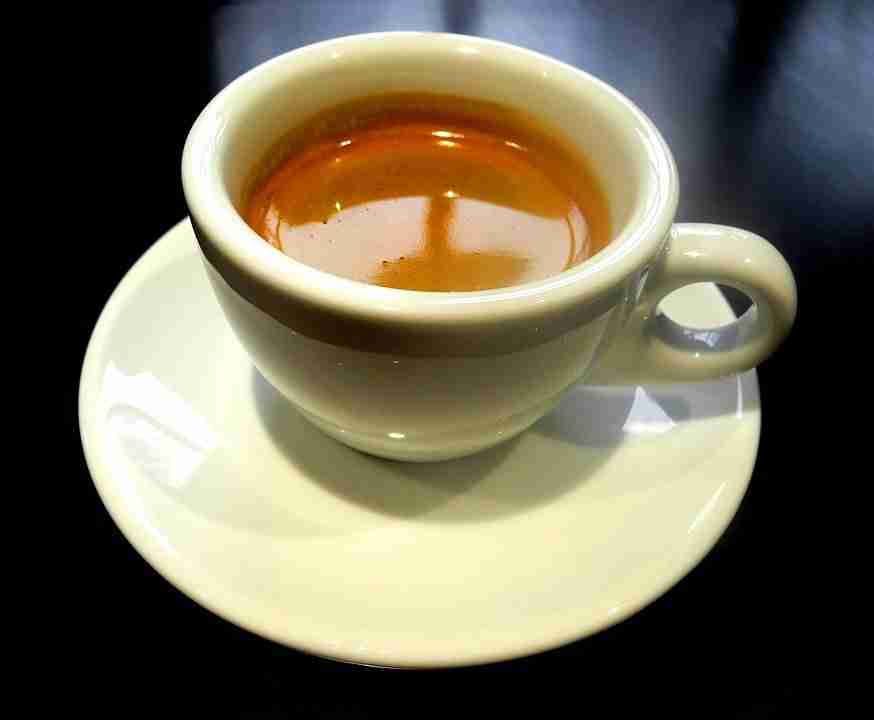
Lungo is a coffee beverage made by using an espresso machine to make an Italian-type coffee, short black with much more water, resulting in a larger coffee, a lungo.
A normal serving of espresso takes from 20 to 40 seconds to pull, and fills 30 to 60 ml, while a lungo may take up to a minute to pull, and might fill 130 to 170 ml.
A lungo is less strong, but more bitter, as compared to espresso because the additional hot water passing through the natural coffee extracts components that would normally remain undissolved.
The more water is passed through the coffee grounds, the more bitter and watery the taste gets. Conversely, using less water than normal produces a stronger, richer coffee known as a ristretto.
As the amount of water is increased or decreased relative to a normal coffee, the composition of the shot changes due to the fact that the flavour components of coffee dissolve at varying rates.
A lungo is a long-pull espresso, the longer the pull, the more caffeine there is and the more ounces you can enjoy.
Macchiato
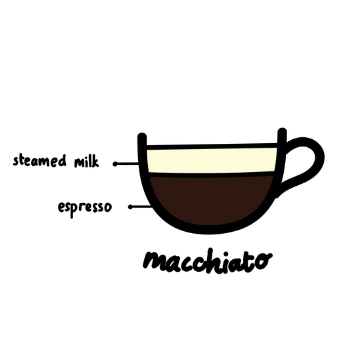
Caffè macchiato, also called an espresso macchiato, is an espresso coffee drink with a small amount of milk, usually foamed.
The caffè macchiato has the highest ratio of espresso to the milk of any drink made with these ingredients, the intent is that the milk moderates, instead of overwhelming the taste of the coffee while adding a hint of sweetness.
The drink is typically prepared by pouring a small amount of steamed milk directly into a single shot of espresso.
It’s the happy medium between a cappuccino and a doppio. To learn more about the macchiato read more here.
Mocha
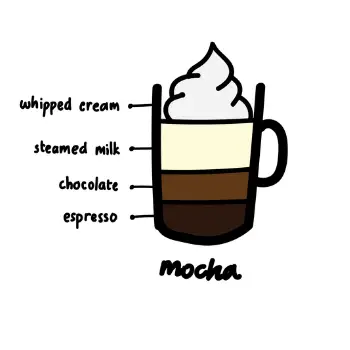
A caffè mocha, also called mocaccino, is a chocolate-flavoured variant of a caffè latte. The name is derived from the city of Mocha, Yemen, which was one of the centres of the early coffee trade.
Like a latte, mocha is based on espresso and hot milk but with added chocolate flavouring and sweetener, typically in the form of chocolate powder and sugar.
Many varieties use chocolate syrup instead, and some may contain dark or milk chocolate.
Caffè mocha, in its most basic formulation, can also be referred to as hot chocolate with added espresso. Like cappuccino, caffè mochas typically contain the distinctive milk froth on top, although, as is common with hot chocolate, they are even served with whipped cream sometimes.
They are usually topped with either cinnamon, sugar and cocoa powder, marshmallows may also be added on top for flavor and decoration.
If you’re a chocolate lover, you’ll definitely fall in love with a mocha, the mocha is a chocolate espresso drink with steamed milk and foam.
Ristretto
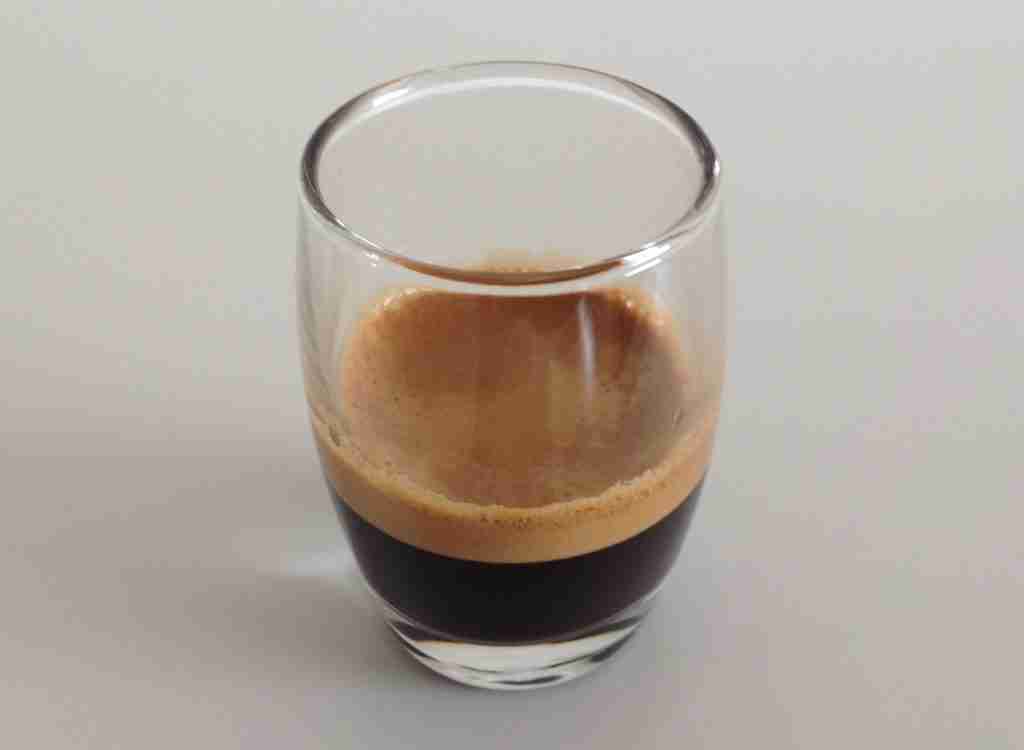
Ristretto is a small shot of a more highly concentrated espresso coffee, it is made with the same amount of ground coffee but extracted with a finer grind using half as much water.
A normal small shot may look like a Ristretto, but in reality, would only be a weaker, more diluted, shot. The opposite of a Ristretto is a lungo, which is a double shot.
Ristretto is an espresso shot, it uses less warm water which creates a sweeter flavour compared to the bitter taste of a traditional shot of espresso or a doppio.
Flat White

A flat white is a coffee drink consisting of espresso having a steamed milk with small, fine bubbles and glossy consistency, it is comparable to a latte but smaller in volume and with less microfoam.
A flat white is generally served in a ceramic cup along with a saucer, milk is frothed and foamy as it would be for a latte but held back to around 20 mm of microfoam, creating a meniscus.
Key to the beverage is the cream being coaxed into the meniscus resulting in the formation of uniform dark brown colour across the top of the beverage.
We should allow the beverage to stand before drinking as it enhances the experience because the meniscus thickens and adds texture to each sip, resulting in distinct sip ring marks as the beverage is consumed.
It is basically a cappuccino without the foam or chocolate sprinkle, it’s an espresso drink with steamed milk.
Affogato
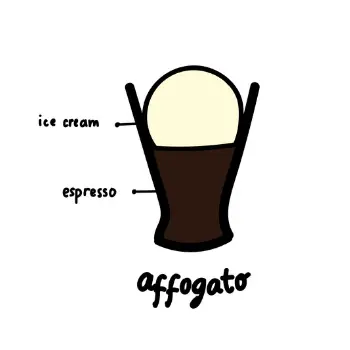
An affogato is an Italian based coffee, it usually takes the form of a scoop of ice cream topped or drowned with a shot of hot espresso. Some variations may include a shot of amaretto, Bicerin, or other liqueur.
Some restaurants and cafes in Italy consider the affogato as a dessert, some restaurants while cafes outside Italy categorise it as a beverage.
Coconut, berries, honeycomb and multiple flavours of ice cream are added for some unique varieties.
The affogato is a perfect excuse to enjoy a scoop of ice cream any time (even in winters), served with a scoop of ice cream and a shot of espresso, or two. The affogato is extra delicious when served over a brownie.
Café au Lait
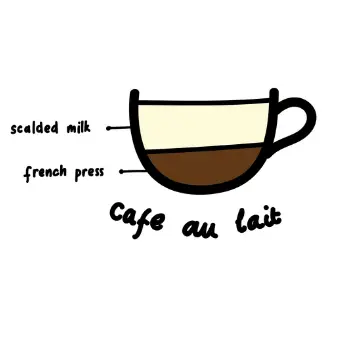
Café au lait is coffee with hot milk added, it is different from white coffee, which is coffee with cold milk, it is perfect for the coffee minimalist who wants a bit more rich flavours.
Just add some warm milk to your coffee and you’re all set.
Irish
Irish coffee is a cocktail consisting of hot coffee, Irish whiskey, and sugar, stirred and topped with cream, this coffee is drunk through the cream.
It’s prepared by pouring Irish whiskey and at least one level teaspoon of sugar over black coffee and stirring it until it gets fully dissolved.
Thick cream is carefully poured over the back of a spoon initially held just above the surface of the coffee and gradually raised a little until the entire layer is floated.
Different types of Iced Coffee
Iced Coffee

Iced coffee is a type of coffee beverage that is served chilled and brewed variously with the fundamental division being cold brew.
Pre-packaged iced coffee is available in grocery stores in several countries, though without ice. Iced coffee is also available in most coffee shops.
Regardless of brewing method, iced coffee is generally brewed at a higher strength than normal coffee, due to the dilution caused by the ice.
Iced coffee may be served already chilled, or poured hot over ice because sugar does not dissolve readily into cold liquids, so it must be added either directly to the hot base, or to the finished product in the form of syrup.
A coffee with ice typically served with a dash of milk, cream or sweetener, it’s as simple as that.
Iced Espresso
An iced espresso is a cold and refreshing way to enjoy your morning cup on a hot summer day, making them at home is a great way to save money, and it allows you to customize your drink just the way you love it.
Iced espresso starts with freshly brewed espresso, and from there you can either chill the espresso in the freezer, or you can cool it down with milk and serve it over ice.
Iced espresso can be served straight or with a dash of milk, cream or sweetener.
Cold Brew
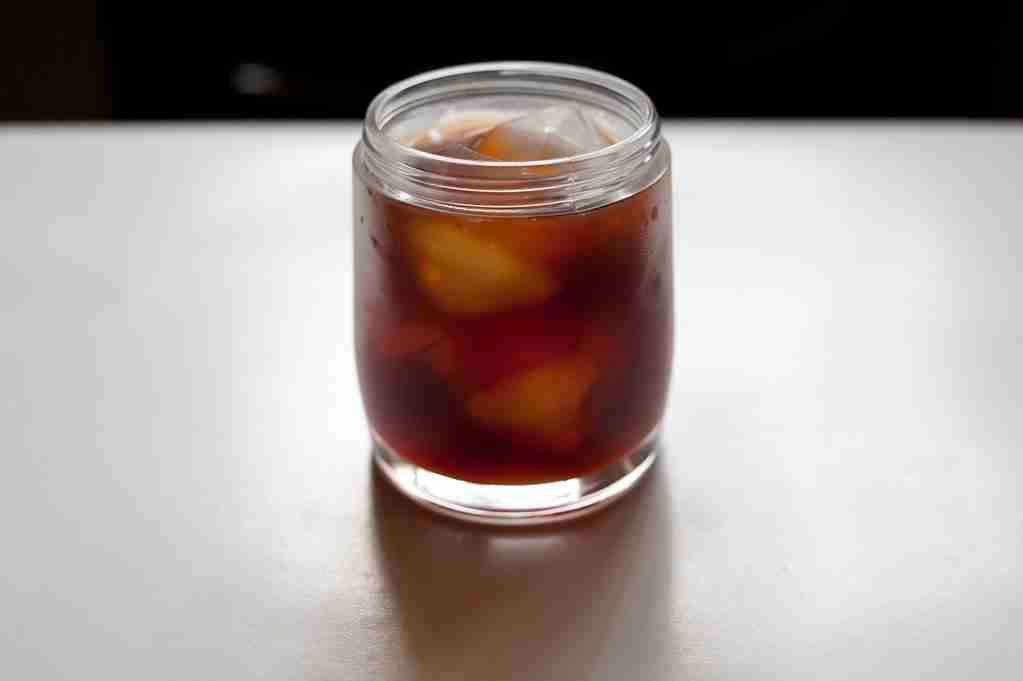
Cold-brew refers to the process of preparing the coffee, not the temperature of the final product.
Beans are ground then soaked in room temperature water for an extended period of time, usually 12 hours or more. A super-smooth, less acidic, and highly caffeinated coffee that can be served hot or cold.
The trendiest of the iced coffee bunch, cold brew coffees are made by soaking coffee beans from anywhere between 7-30 hours, depending on how strong you would like your cold brew.
Once the beans are done soaking, add cold milk or cream.
Frappuccino
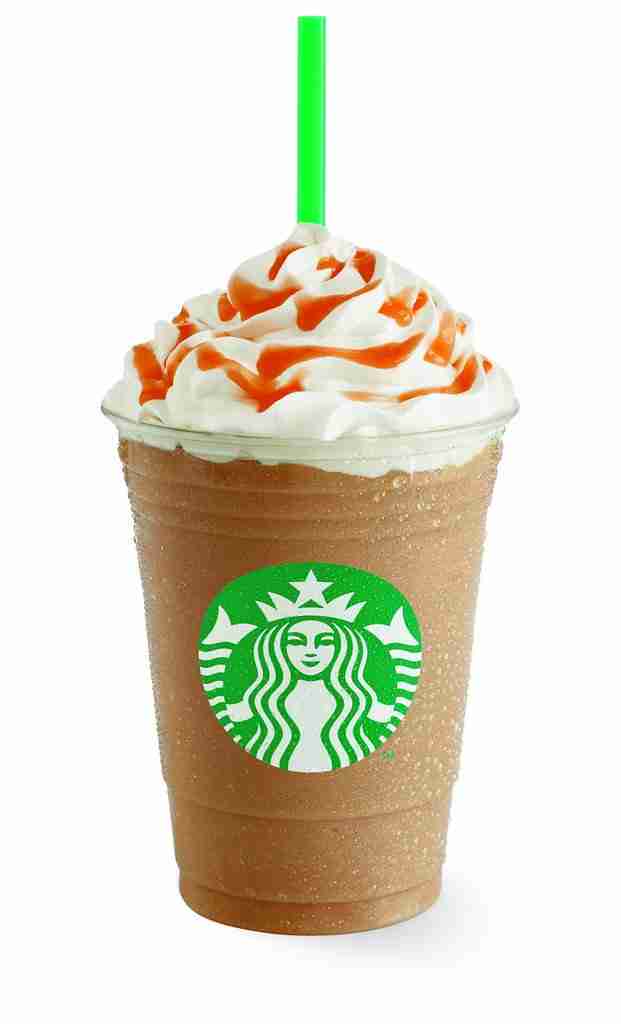
Frappuccino is a trademarked brand of Starbucks for a line of iced, blended coffee drinks, it consists of coffee or cream base, blended with ice and other different ingredients, usually topped with whipped cream and flavoured syrups.
Frappuccinos are also sold as bottled coffee beverages in grocery stores, convenience stores and from vending machines.
Frappuccino was made famous by Starbucks, it is a blended iced coffee drink that’s topped with whipped cream and syrup. But not all of them are made the same.
Nitro
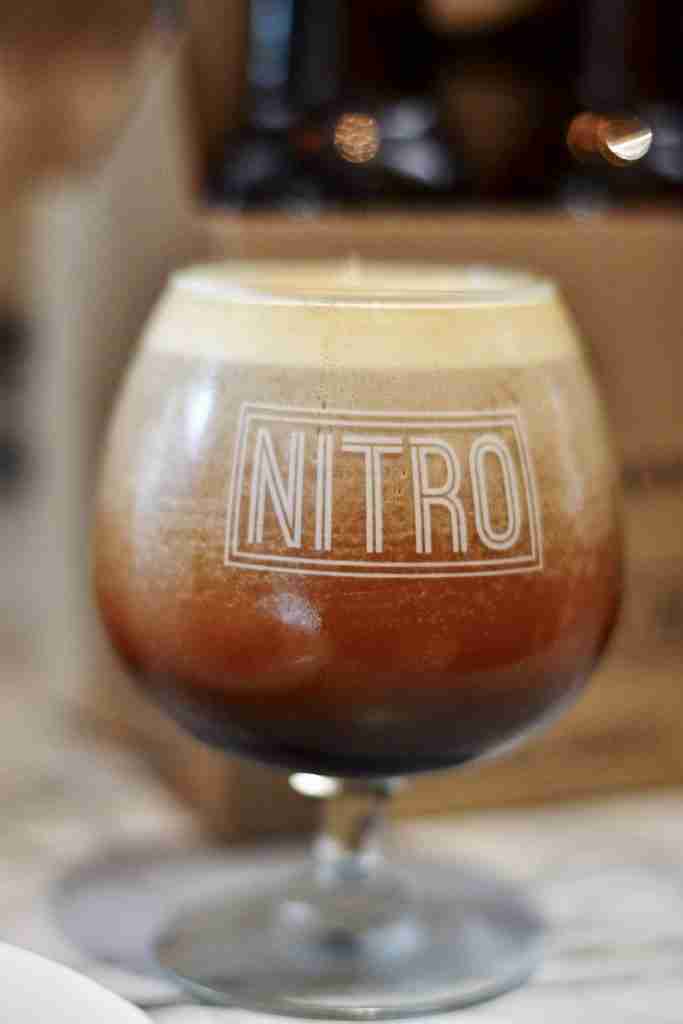
Nitro coffee offers a thick and creamy texture that sets it apart from regular coffee, similar to other beverages, such as sparkling water or soda, nitro coffee is infused with small gas bubbles that alter the mouthfeel.
This gives it a frothy, foam-like texture and a smooth mouthfeel that is often compared to beer.
Mazagran
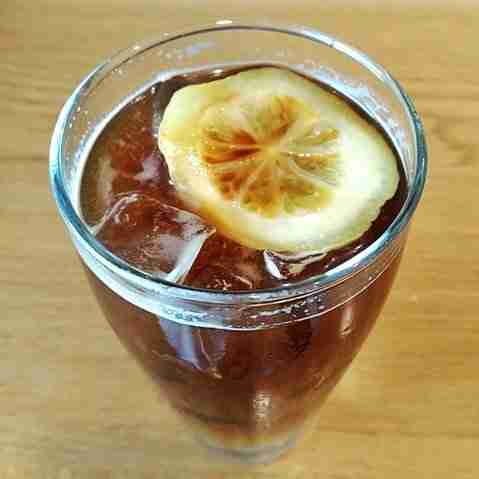
Mazagran is a cold, sweetened coffee drink that originated in Algeria. Portuguese versions use espresso, lemon, mint and rum, and Austrian versions are served with an ice cube and include rum.
Sometimes a fast version is achieved by pouring a previously sweetened espresso in a cup with ice and a slice of lemon, it has been described as the original iced coffee.
Mazagran coffee is a cross between iced coffee, tea and your favourite rum drink, it typically consists of espresso, lemon, sugar and sometimes rum.
Bulletproof coffee
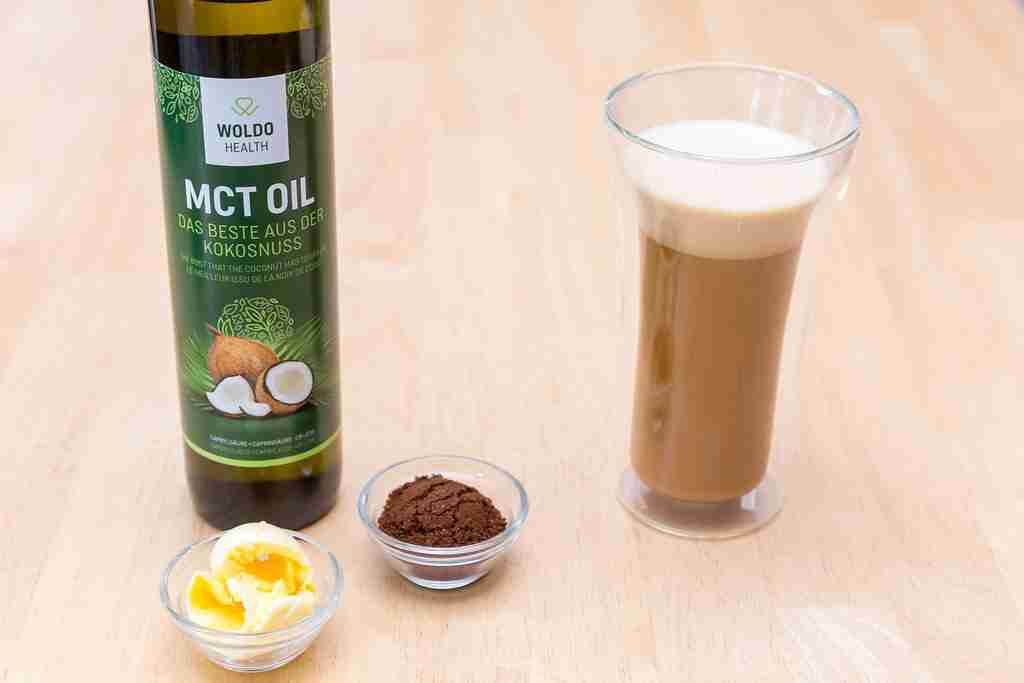
Bulletproof coffee is also known as butter coffee, it is a high-calorie drink prepared with added fats, intended to give a boost to your start to the day.
It is be prepared by adding 1 cup black coffee, 2 tbsp butter and 1 tbsp coconut oil blended until creamy
Chai Latte

Chai lattes are usually made with water, milk, and black tea with chai ingredients such as cinnamon, cardamom, black pepper, ginger, and cloves.
Chai latte is basically an Espresso mixed with spiced tea and steamed milk.
Liqueur Coffee
A liqueur coffee is a coffee drink with a shot of liqueur, it may be served in a special liqueur coffee glass, often with cream and sugar.
Liqueur coffee is a variant of Irish coffee, hot coffee with whiskey and a layer of cream floating on top.
Liqueur coffee is specifically popular in Spain, where it is considered a traditional drink. Widely known throughout Spain as “carajillo”, it is made from a blend of coffee, sugar, and strong alcohol such as rum.
It can be prepared by brewing coffee with 25 ml shot of liqueur and sometimes served with cream.
Turkish Coffee
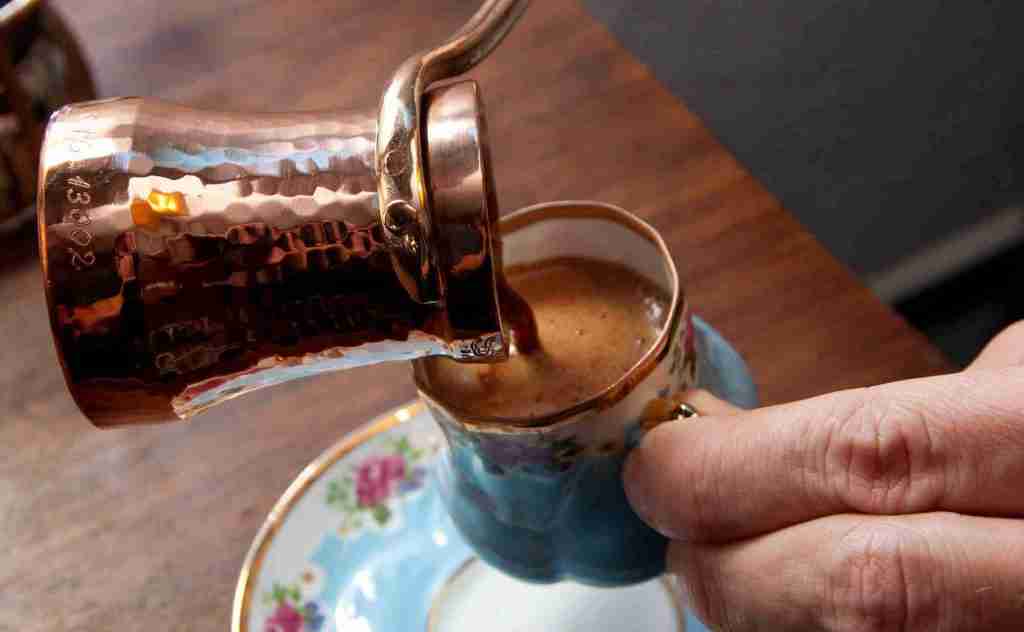
Turkish coffee is a style of coffee prepared using very finely ground coffee beans without filtering, despite the name, this coffee originated in Yemen and then brought to Turkey.
Turkish coffee is made by bringing the powdered coffee with water and usually sugar to the boil in a special pot called “cezve“ in Turkey.
As soon as the mixture begins to froth, and before it boils over, it is taken off the heat. It may be reheated twice more to increase the desired froth, sometimes about one-third of the coffee is distributed to individual cups, the remaining amount is returned to the fire and distributed to the cups as soon as it comes to the boil.
Sugar is added to this beverage while brewing, so the amount of sugar must be specified when preparing the coffee.
Egg Coffee
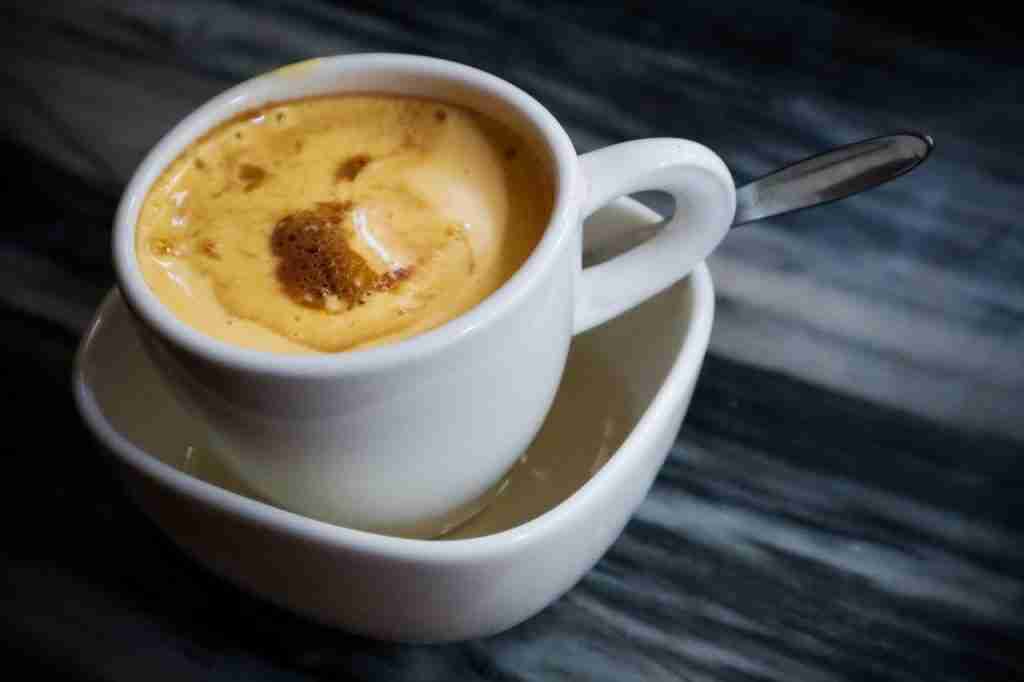
Egg coffee is a Vietnamese drink traditionally prepared with egg yolks, sugar, condensed milk and robusta coffee beans. The drink is made by beating egg yolks with sugar and coffee, then extracting the coffee into half of the cup, followed by a similar amount of “egg cream”.
Ingredients for making coffee include eggs, sugar, milk, and coffee. The egg yolks are whipped with milk and sugar and then boiled.
Warm or iced coffee is poured into the beaten eggs, which will form a beautiful and aromatic foam. A teaspoon is provided in order to eat the foam before drinking the coffee at the bottom.
Conclusion
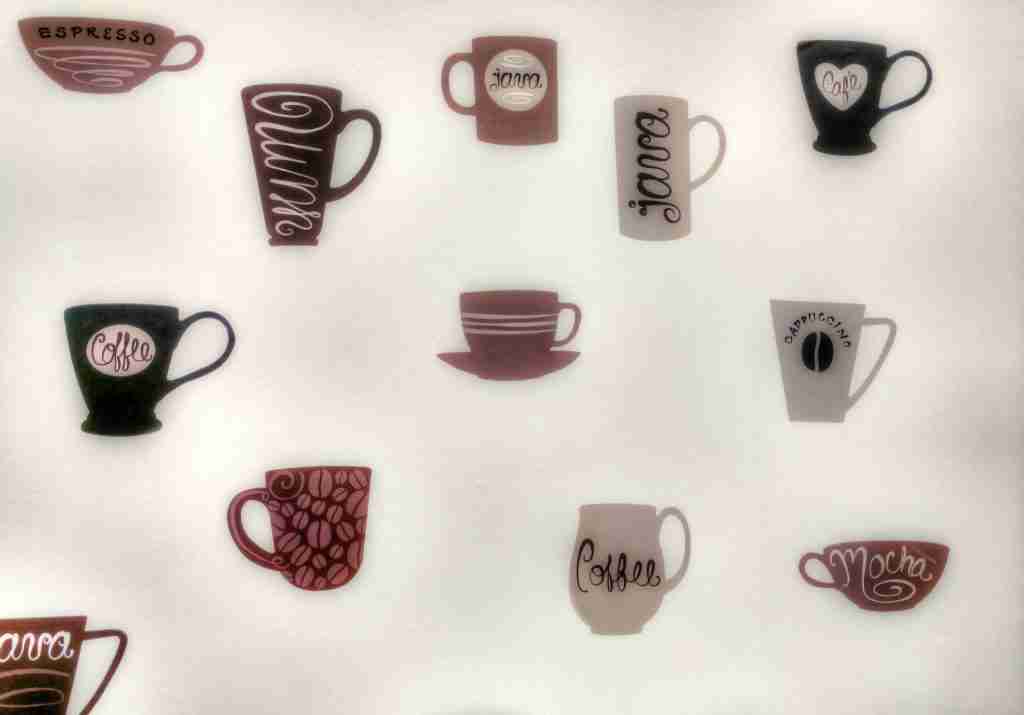
| Wrapping up all different coffee drinks (important takeaways) |
|---|
| There are 4 different types of coffee beans. |
| Arabica is the most popular coffee bean. |
| There are many other types of arabica beans. |
| Black coffee is normally brewed without any added flavours. |
| A cappuccino is an espresso drink based on coffee that’s originated in Italy. |
| Espresso is a coffee-making method that originated in Italy. |
| A cortado is a beverage consisting of espresso mixed with a roughly equal amount of hot milk to reduce the acidity. |
| Lungo is a coffee beverage made by using an espresso machine to make an Italian-type coffee. |
| A caffè mocha, also called mocaccino, is a chocolate-flavoured variant of a caffè latte. |
| Ristretto is a small shot of a more highly concentrated espresso coffee. |
| Iced espresso can be served straight or with a dash of milk, cream or sweetener. |
| Cold-brew refers to the process of preparing the coffee, not the temperature of the final product. |
| Chai latte is basically an Espresso mixed with spiced tea and steamed milk. |
| Turkish coffee is made by bringing powdered coffee with water. |
| Egg coffee is a Vietnamese drink traditionally prepared with egg yolks, sugar, condensed milk and robusta coffee beans. |

